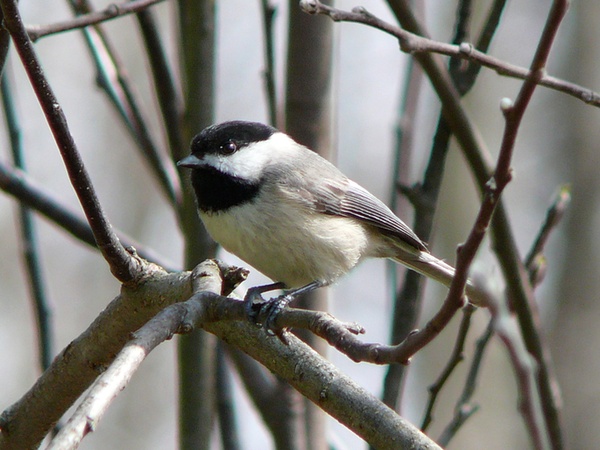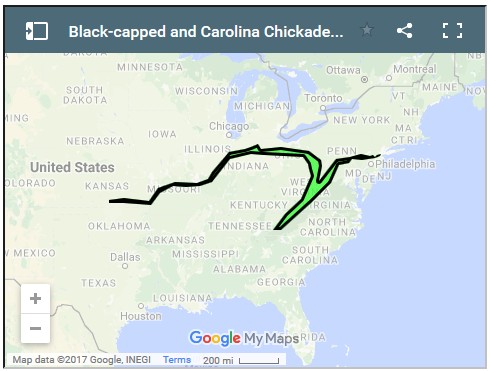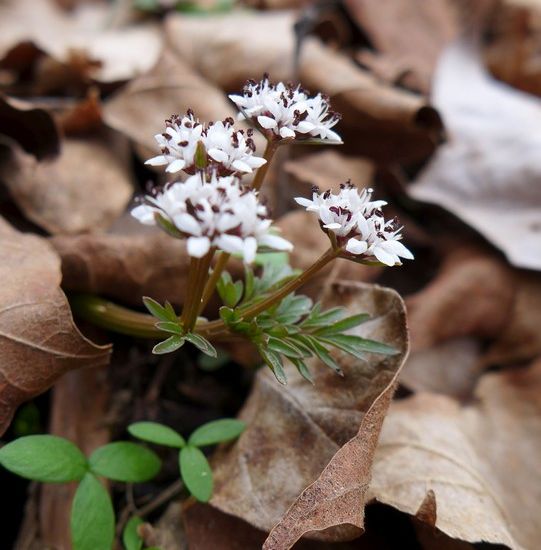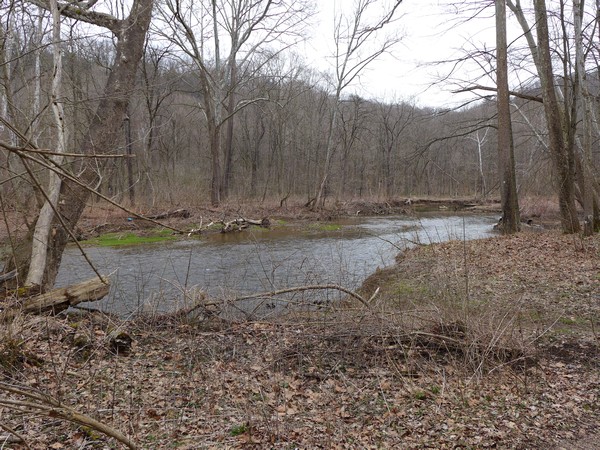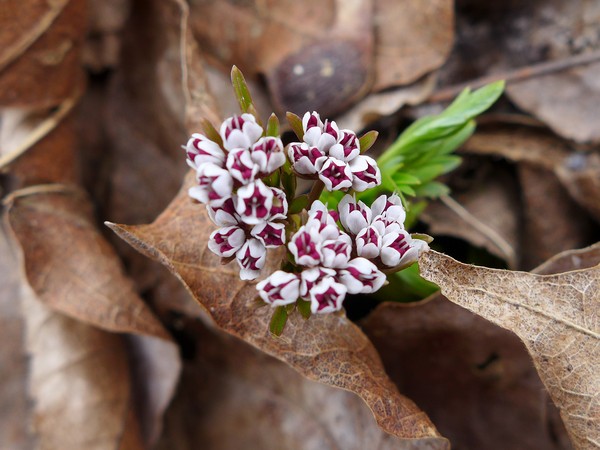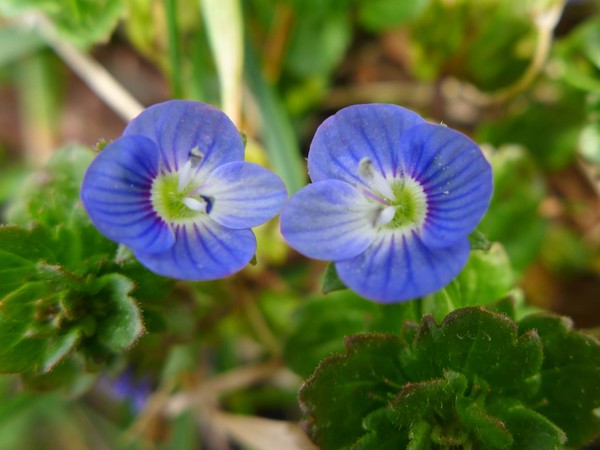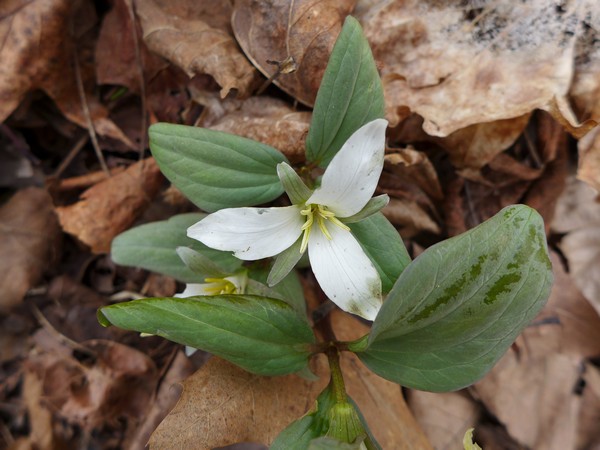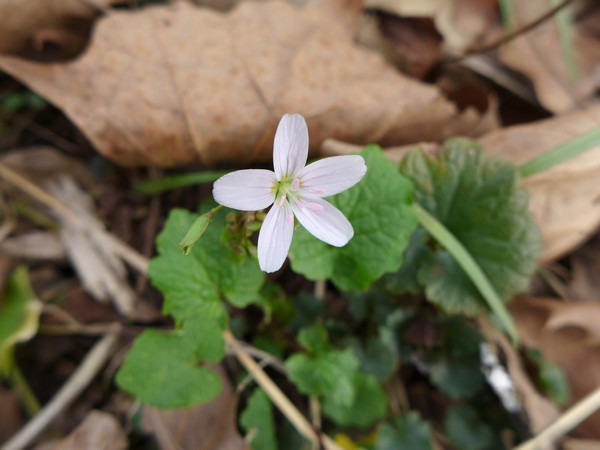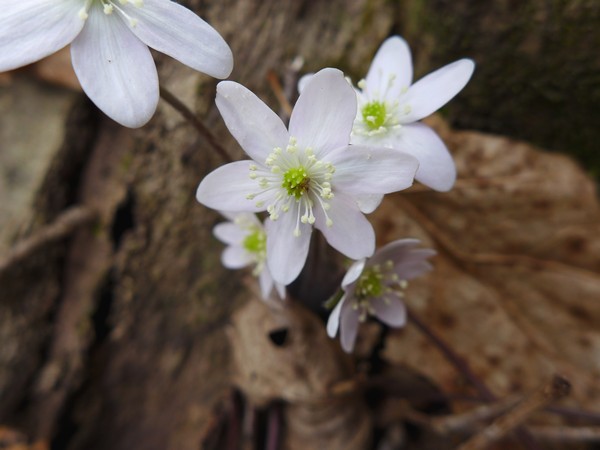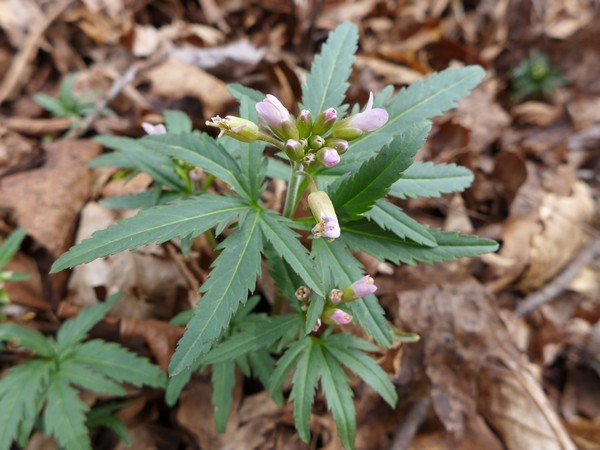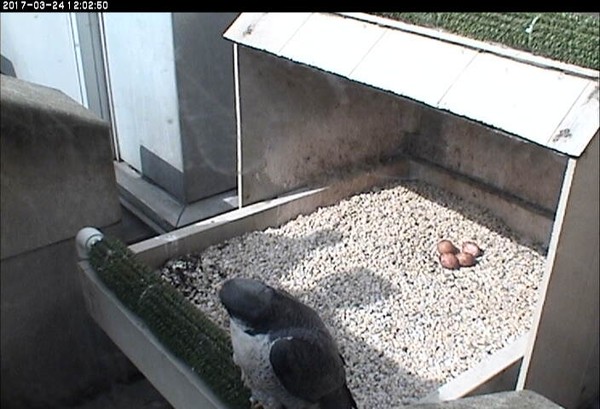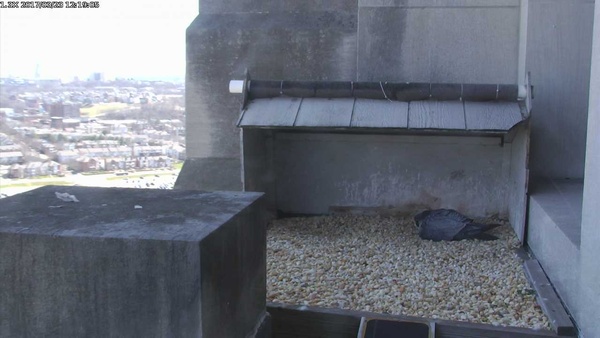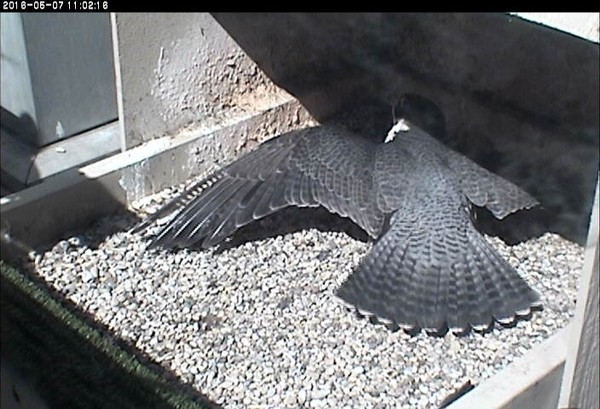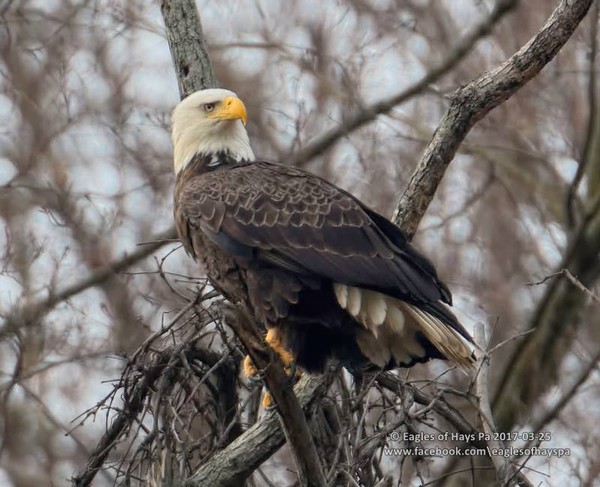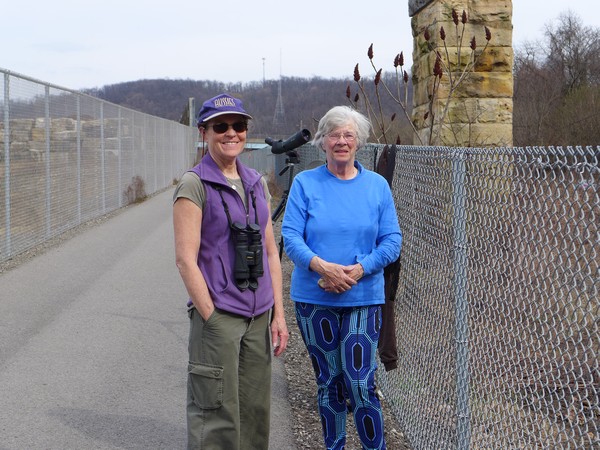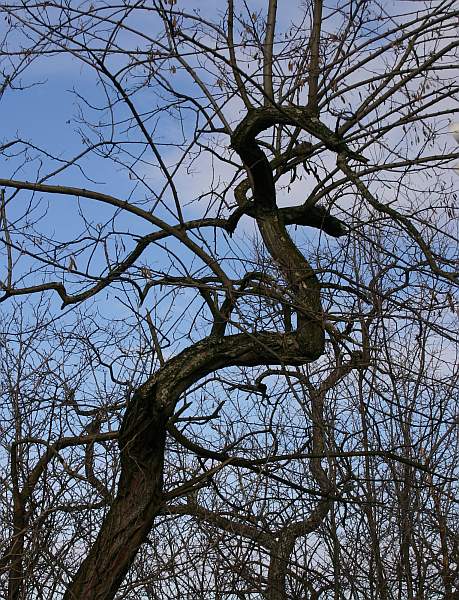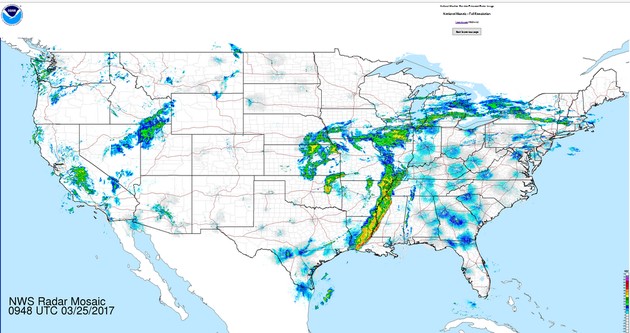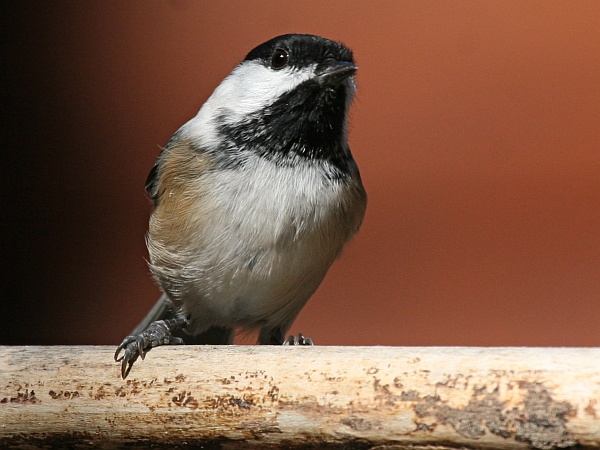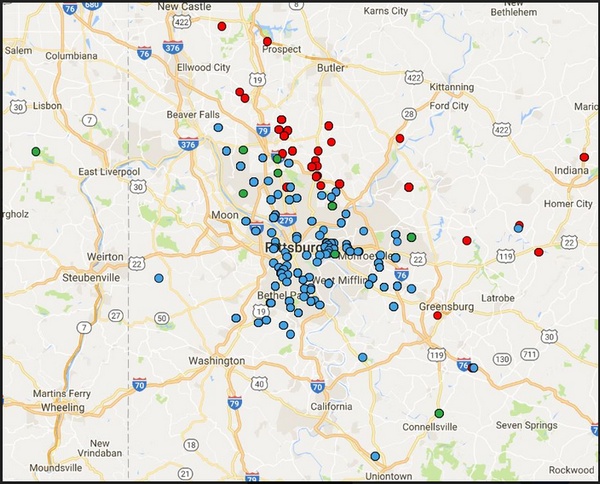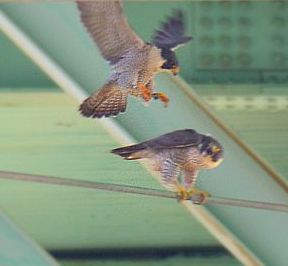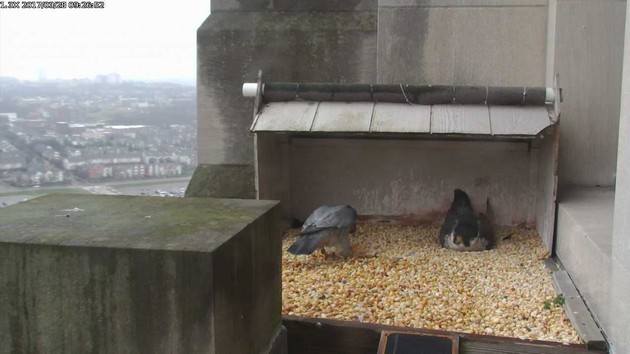
It’s peregrine falcon nesting season in western Pennsylvania. Here’s the latest news from our nine nesting locations.
1. Downtown Pittsburgh: This year at the Gulf Tower
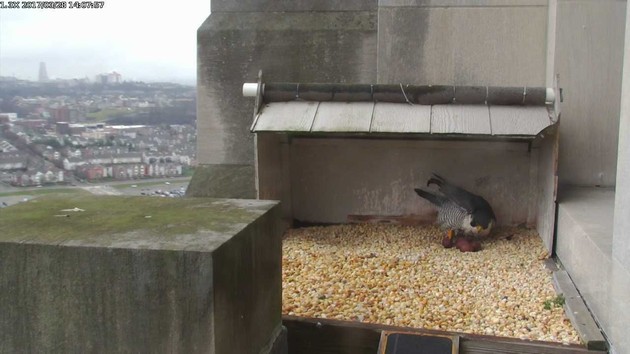
This year we’re pleased that Dori and Louie are nesting at the Gulf Tower after two years at other Downtown sites. Dori laid her first egg on March 8, her last on March 17. With such a full nest it took us three days to notice she had five eggs. Our best guess for Hatch Date is approximately 4/16/2017. Watch the Gulf Tower nest online on the National Aviary’s falconcam.
2. Cathedral of Learning, University of Pittsburgh
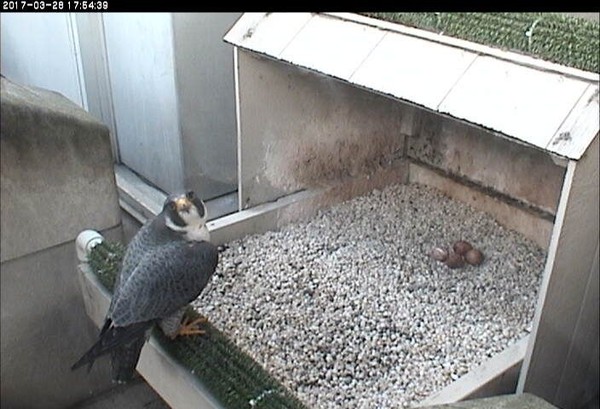
Hope and Terzo are incubating four eggs at the University of Pittsburgh’s Cathedral of Learning. Hope laid her first egg on March 15 and her last egg on March 24 after an unusual four day pause. (Eggs are usually laid 2 days apart.) It’s hard to calculate Hatch Date under these circumstances but our best guess is 4/22/2017. Watch this nest online at the National Aviary’s Cathedral of Learning falconcam.
3. Westinghouse Bridge, Allegheny County
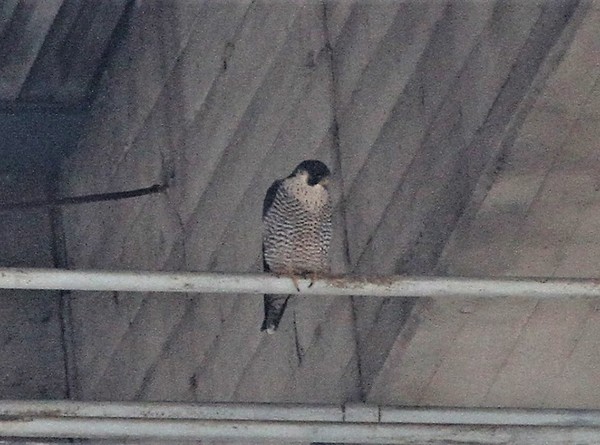
Peregrines didn’t nest at the Westinghouse Bridge last year but at least one remained on territory. On March 21 John English and Doug Cunzolo found this one, identified as George (Cobb Island, 2006). Neighbors on Elder Street say peregrines have been loud in recent weeks and favoring the area they used in 2014.
This site needs more monitors so please visit and report what you see. Click here for a map of 3 viewing locations. The best one is Elder Street (yellow X). Note: The railroad forbids access under the bridge.
4. McKees Rocks Bridge, Allegheny County

This bridge is so long and high that it’s very hard to monitor. Nonetheless a pair of peregrines has been seen twice in courtship flight: by Leslie Ferree on February 25, and by John Flannigan on March 16. Keep an eye out for peregrines if you’re in the vicinity.
5. Neville Island I-79 Bridge, Allegheny County

The peregrines at this bridge were identified two years ago as Magnum (Canton, 2010) and Beau (Cathedral of Learning, 2010, son of Dorothy and E2). Anne Marie Bosnyak saw lots of mating and courtship activity, most recently on March 18 and 19. It’s a good sign that this pair is probably incubating by now.
6. Monaca East Rochester Bridge, Beaver County

I can’t find any recent reports of peregrines in the Beaver-Monaca area but that doesn’t mean they aren’t there. If you’re in the vicinity, check for peregrines near this bridge and near the big black railroad bridge that crosses from Monaca to Beaver. Peregrines have used both sites. Note! See Cindy’s comment below. She’s seen peregrines at this bridge.
7. Tarentum Bridge, Allegheny-Westmoreland County
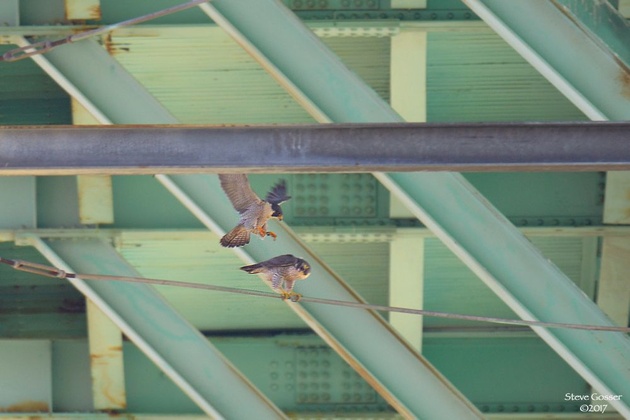
The Tarentum Bridge has been very active in recent weeks. Site monitor Rob Protz sees or hears a peregrine nearly every day and Steve Gosser photographed the pair mating on March 21. Though we still don’t know their identities (the male is banded) we have our fingers crossed for a successful nest this year.
8. The Graff Bridge, Route 422 Kittanning, Armstrong County

Last year peregrines nested successfully at the Graff Bridge near Kittanning, PA and they’re present this year, too. A few weeks ago they were seen copulating on the bridge and on Wednesday Tony Bruno found this one. The birds are quiet now so perhaps they’re incubating. Watch for more activity around hatching time in late April or early May.
9. Erie, PA Waterfront, Erie County

Mary Birdsong confirms that Erie’s peregrines are setting up housekeeping inside the Donjon Shipyard building again (shown below). Last year the pair was Nomad (Cleveland, 2008) and an unbanded female. If you want to see peregrines in Erie, check the top of the old smokestack in the photo above. Here’s a map.

(photo credits:
photos from the National Aviary falconcams
Peregrine at Westinghouse Bridge by Doug Cunzolo
McKees Rocks Bridge, Neville Island I-79 Bridge and Erie, PA Waterfront from Wikimedia Commons
Peregrines mating at Tarentum by Steve Gosser
Peregrine at the Graff Bridge by Anthony Bruno
DonJon Shipbuilding, Erie, PA, linked from donjonshipbuilding.com)

